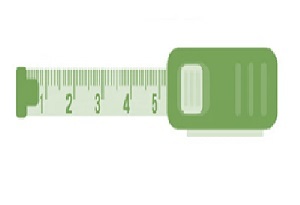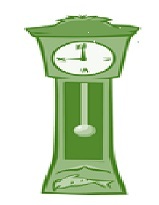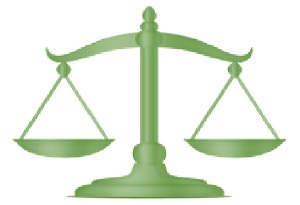
 Data Structure
Data Structure Networking
Networking RDBMS
RDBMS Operating System
Operating System Java
Java MS Excel
MS Excel iOS
iOS HTML
HTML CSS
CSS Android
Android Python
Python C Programming
C Programming C++
C++ C#
C# MongoDB
MongoDB MySQL
MySQL Javascript
Javascript PHP
PHP
- Selected Reading
- UPSC IAS Exams Notes
- Developer's Best Practices
- Questions and Answers
- Effective Resume Writing
- HR Interview Questions
- Computer Glossary
- Who is Who
Measurement of Objects
Introduction
Size is always discussed or understood in relation to another object. A relative concept, size. Its own meaning is meaningless. For instance, a dog may seem small to you, but from the perspective of an ant, it is, needless to say, extremely large. In mathematics, scale matters a lot. Realising that mathematics is all around us and that all we do in the classrooms is define and refine it is crucial for understanding patterns and numbers in everyday life.
Measurement Definition
Measurement is a method that involves comparing an object's characteristics to a reference value to identify its attributes. The primary metric for expressing any quantity of items, things, or occurrences is measurement.
In a number of branches of mathematics, we work with several fundamental categories of measurement variables. As follows
Temperature
Time
Weight
Length
Volume
Methods and Tools of Measurement
The various methods for measuring a physical variable are as follows.
-
Direct Method
The value of a quantity is directly determined using the direct method of measurement by comparing the unknown to the standard.
To get the findings, there are no mathematical calculations required.
For example, measuring the wall height using measuring tape.
-
Indirect Method
The indirect measuring approach is employed when direct measurement is not feasible.
While indirect measurement involves measuring another quantity and determining the required value through a mathematical relationship, direct measurement involves measuring exactly the amount you wish to measure.
For example, volume is calculated by dividing the mass by the density, (Volume = Mass/Density)
-
Comparative Method
The amount to be measured is compared with the value of the identical quantity that is known in the comparative measurement method.
For example, comparing the height of a person with reference to another person.
-
Substitution Method
The value of the quantity to be measured is swapped out for the known value of the same quantity in the substitution measurement method. By substituting a known amount that has the same effect on the indicating device for the measuring quantity, the quantity to be measured is determined by direct comparison on the indicating device in this approach.
For example, the calibration of weights by the substitution method.
-
Null Method
In the null measurement approach, the difference between the amount to be measured and the known quantity is set to zero, i.e., the indicator indicates a reading of 0.The precision of null measuring approaches is higher.
For example, measuring unknown resistance using Wheatstone Bridge
-
Fundamental Method
The basic measurement method bases its measurement on the measurement of the base quantities that serve as the quantity's definition.
The definition of the quantity being measured and the quantity itself are both directly measured.
For example, measurement of the temperature by fixed point apparatus.
The following are some tools used for measuring purposes
Measuring Tape Used to measure length and distance.

Pendulum clock Used to measure the time.

Weighing machine Used to measure the weight.

History of Measurement
The earliest known weights and measures systems date back to the third or fourth millennia BC. For trade, agricultural, and construction needs, measurement was necessary even in the oldest civilizations.
Every location developed its own standards for lengths, areas, volumes, and masses, with early standard units maybe only being applicable to a single community or small region. Such systems frequently have strong ties to a single sector of application, hence the volume measures.
Modernized, streamlined, and consistent systems of weights and measures were created beginning in the 18th century, with the fundamental units being established by ever-more-accurate techniques in the field of metrology. The invention and use of electricity served as one of the driving forces behind the creation of standardised, globally applicable units.
Units of Measurement Across the Globe
As previously mentioned, there are units of measurement for many forms of measurement. Let's look at the measurement units listed below.
Time There are several ways to express time, including using seconds, minutes, hours, days, weeks, months, and years.
Length Measurements of length can be made in centimetres, metres or inches and feets etc.
Weight Tons, grams, kilograms, and other units are used to express the weight of various items.
Volume Litre, cubic cm, and other units are used to express volume.
Temperature Celsius, Fahrenheit and Kelvin are the three main temperature measurement units.
Conversion Between Meters and Foot
One meter has 3.28084 foots so to convert the given meter value to foot value we have to multiiply the the meter value by 3.28084.
For example, convert 5 meters to foot.
As 1 meter is equal to 3.28084 foot..
Thus, 5 meters = 5 Ã 3.28084 foot.
Hence, 5 meters = 16.404 foot.
Perimeter, Area, and Volume
Perimeter The length of a shape's figure as a whole, usually referred to as the whole sum of its sides, is known as its perimeter. The lengths of an object's sides are added up to determine its perimeter.
Area The space contained within a shape's sides or edges is known as its area. The length and width of the shape are often multiplied to determine the area, which is expressed in square units. However, the formulas can vary depending on the different polygons.
Volume The amount of 3D space that a shape takes up is known as its volume. Because the volume is determined by multiplying the base area of the shape by its height the volume is reported in cubic units (cubic metres, cubic centimetres), since the height is always measured in normal units (metres, millimetres, etc.) and the area in square ones (square metres, square centimetres, etc.).
Solved Examples
Example 1: What is the equivalent of 16 meters in foot?
Solution:
We know that 1 meter is equal to 3.28084 foot, so we will multiply the given meter value by 3.28084 to get the converted equivalent foot value.
Hence, 16 meters = 16 Ã 3.28084 =52.49 foot.
Example 2: Describe how to measure a straight line by using a ruler.
Solution:We must employ a common centimetre or metre scale in order to determine the length of a straight line drawn on paper. The following is the measurement process:
Align one end of the straight line with the ruler's 0 marks.
Verify that the ruler's edge is exactly perpendicular to the line.
From a perpendicular angle, look at the mark that touches the opposite end of the straight line.
Note the importance of this symbol. This point indicates the size of the length. The scale unit used for measurement is important and needs to be included as well.
Conclusion
Size is always discussed or understood in relation to another object. A relative concept, size. Its own meaning is meaningless.
Measurement is a method that involves comparing an object's characteristics to a reference value to identify its attributes.
-
The various methods for measuring a physical variable are as follows.
Direct Method
Indirect Method
Comparative Method
Substitution Method
Null Method
Fundamental Method
One meter has 3.28084 foots so to convert the given meter value to foot value we have to multiiply the the meter value by 3.28084.
FAQs
1.What purpose does measurement serve?
Some things, including distance, time, temperature, and others, must be measured in order for us to fully understand the environment in which we live. The concept of measurement is used in almost every discipline.
2.How do you change metres to feet?
By multiplying the supplied metre value by 3.28084, one can convert metres to feet.
3.What is the equivalent in feet of 30 metres?
As 1 metre equals 3.28084, 30 metres is 30 times 3.28084, which is equal to 98.425 feet.
4.What is the comparative method of measurement ?
The amount to be measured is compared with the value of the identical quantity that is known in the comparative measurement method.
5.How does a metric system quantify force?
The metric system uses kilogrammes as the unit of force, which is represented by the sign kg.

